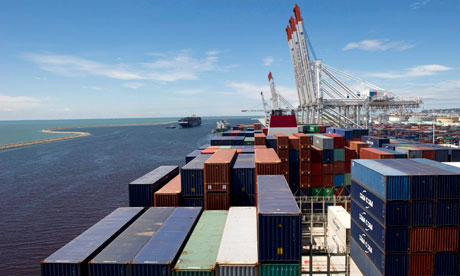How exactly do the U.S. and its partners propose to keep a tighter leash on Iran’s nuclear program than they are now keeping on its shipping traffic?
American negotiators and their cohorts are trying to close a deal that would let Iran keep its nuclear program, subject to intricate conditions of monitoring and enforcement. Yet how is a deal like that supposed to be verified? The Obama administration can’t even keep up with the Iran-linked oil tankers on the U.S. blacklist.
Currently, there are at least 55 of these tankers the Treasury Department says are under U.S. sanctions. These are large ships, major links in the oil chain that sustains the Tehran regime, many of them calling at ports from Turkey to China. They are easier to spot and track than, say, smuggled nuclear parts (which, in a pinch, they could potentially squeeze on board).
But Iran has engaged for years in what Treasury called “deceptive practices” to dodge sanctions. These include trying to mask the identities, and sometimes the smuggling activities, of its blacklisted ships by renaming them, reflagging them to other countries, veiling their ownership behind front companies, presenting false documents, and engaging in illicit ship-to-ship oil transfers.
The result, according to information on Treasury’s publicly available blacklist, is that the U.S. government cannot establish under what flag at least 31 of these tankers are doing business. They can be identified by their unique seven-digit hull numbers, or IMO numbers, issued for the life of each ship. But a ship’s flag also is a vital identifier, one under which it signals its position, carries cargo and presents credentials to visit ports, buy insurance and pay fees. On Treasury’s Specially Designated Nationals list, which helps ensure global compliance with U.S. sanctions, in the category of “flag” for these 31 tankers Treasury states: “none identified.”
Under terms of the November 2013 Joint Plan of Action that frames the Iran nuclear talks, the U.S. does grant temporary waivers for a handful of places to buy Iranian oil in limited quantities: Turkey, India, China, Japan, South Korea and Taiwan. This means that some activities of these tankers may be legitimate. Other activities—say, unloading oil en route to customers not on the waiver list—could potentially involve violations of sanctions and mean penalties for anyone who does business with them, such as being cut off from trade or financial transactions with the U.S.
 |
| It now has a 5th name, the 'Susangird' |
Typical of Iran’s shrouded tanker fleet is the blacklisted ship called the Sinopa, previously named the Superior and before that, the Daisy. Since early 2014, the Sinopa has visited India and China. It has also made multiple trips from Iran to Turkey, via the Suez Canal, according to Lloyd’s List Intelligence shipping database, the main source of ship-tracking data for this article. Judging by Treasury’s blacklist, the Sinopa—which Treasury still describes under her previous name of Superior—has done all of this under no identified flag. Why not—what is she hiding? The Treasury refuses to comment on specific cases.Read the rest of the story HERE.
If you like what you see, please "Like" us on Facebook either here or here. Please follow us on Twitter here.






No comments:
Post a Comment